| San Miguel is about 40 miles north of Querétaro.
We approached it by a ring road which goes around the south side high above
the town. Our campsite, which was excellent, was just inside this ring road. | 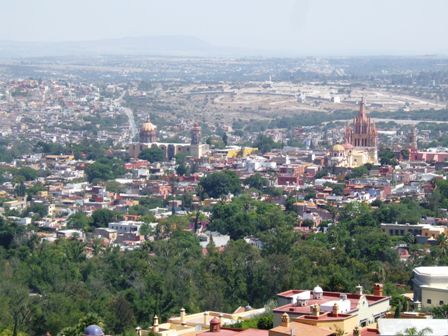 |
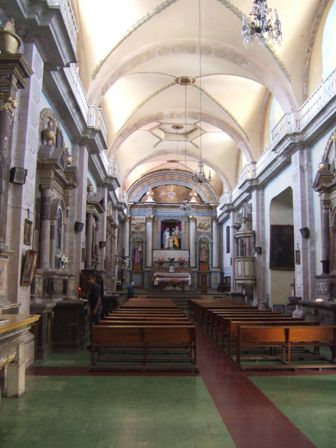 |
San Miguel is another World Heritage site, full of narrow streets and small
squares. We followed our now established pattern of catching a bus which
dropped us in the centre. We went the wrong way to begin with but soon found
a church to navigate by. This is Santa Casa de Loreto. A bit smaller and
less opulent than some but better to prepare us for those to come. |
| The main church is not far away and is another
Oratorio de San Felipe Neri, the same as the Cathedral in Querétaro.
This was constructed between 1712 and 1753.The outside façade
is an original demonstration of the baroque style with five vaulted niches
containing statues of St Joseph, St John, St Peter, St Paul, and St Felipe
Neri. No, I have no idea which one is at the top. | 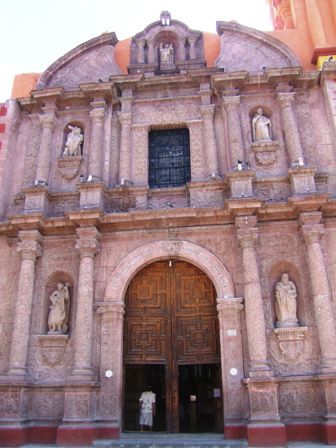 |
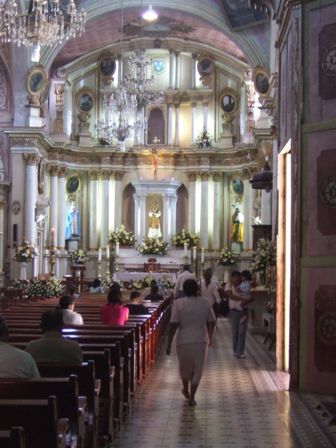 |
Even mid morning there were quite a number of people sitting in the cool in
quiet contemplation. We feel like, and probably are, intruders on their
space so we try not to be too conspicuous. The main altar is neoclassical in
style and features several polychromed wooden statues. |
| Of course they have their statues. This is Don Miguel
de Allende after whom the town is named. He was one of the leaders of the
revolution in 1810. (He too was shot.) | 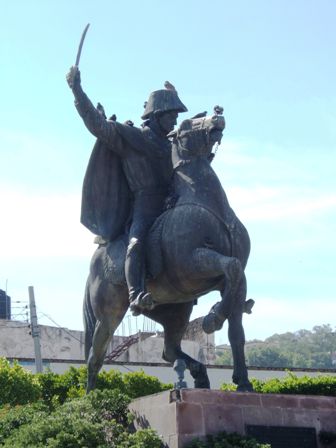 |
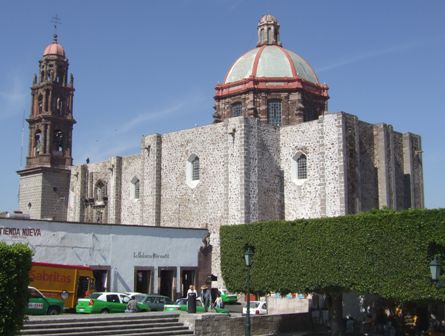 |
This is probably the most impressive group of buildings and is the Convent
of San Antonio de San Francisco. The convent was founded in 1606 and later a
school of superior studies (university) was added. |
| The Franciscans had vows of poverty and the original
design was simple in structure with plateresque influences. Later
ornamentation was added through generous donations. | 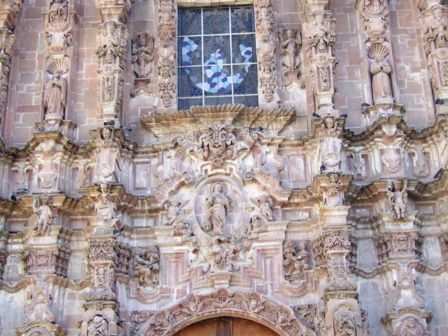 |
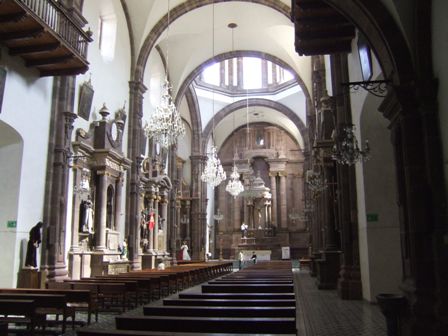 |
The walls were originally bare and the tower and dome were not added until
1779-99. Additions in ornamentation at this time were chirriguresque. |
| There are more buildings with the vaulted pavements
surrounding the main square and in one of these we found the tourist office.
These vary in the amount of help they can give although they try hard. It
does not matter too much because we have maps from the guide books and most
major buildings have boards outside with explanations in both Spanish and
English (and it is usually good English). Perhaps this is a condition of
being a World Heritage site. | 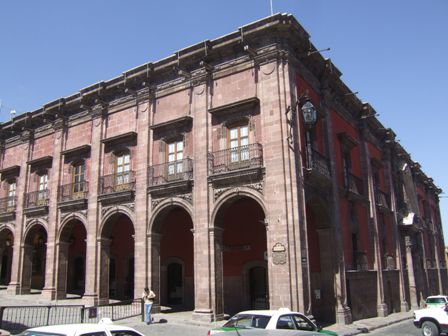 |
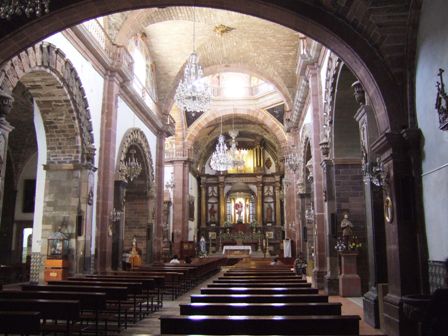 |
After a while the churches all begin to look the same although some have a
plainer style. It may be because they are almost all Catholic and in England
they are mostly non-Catholic and thus not so opulent. This we think was
the Parroquia de San Miguel Arcángel. |
| A number of churches have mural paintings. From their
condition I would guess they are later additions and no where near as old as
the church. | 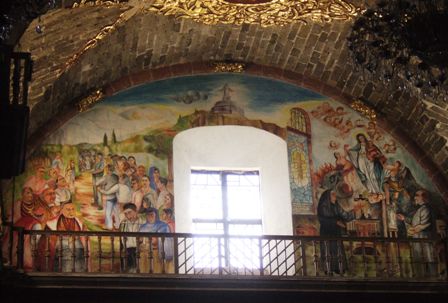 |
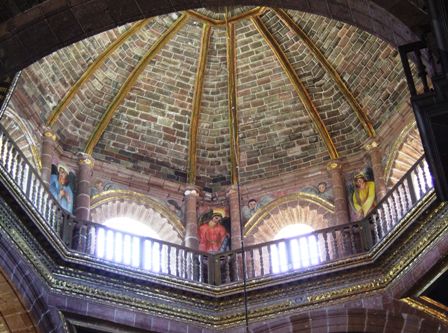 |
This is unusual in that the dome is made of brick and not plastered and
painted as with so many. This would have been a challenge to build. |
| Although crucifixion was common in the period both in
the middle east and in Japan, I'm sure there are more depictions of it than
ever actually occurred. This collection is unusual for its setting with the
mass of rocks at the foot. | 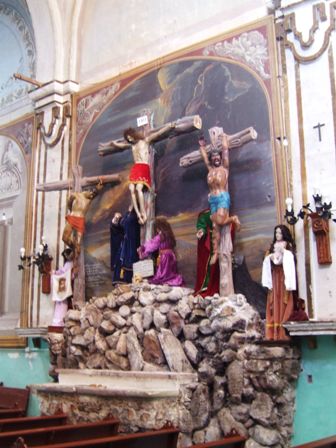 |
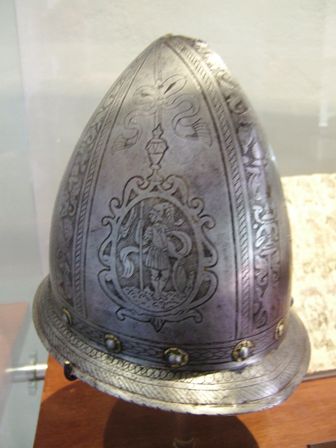 |
As a change from churches we went to the Casa Allende museum, which used to
be his house and told the story of the history of the town and Miguel
Allende. This is a helmet from the time of the conquistadors. It looked
quite small. |
| The women of the house would all have been
accomplished musicians as evidenced by this harpsichord. | 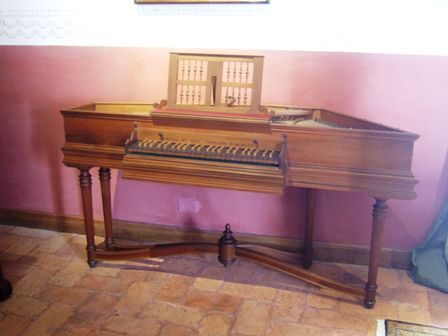 |
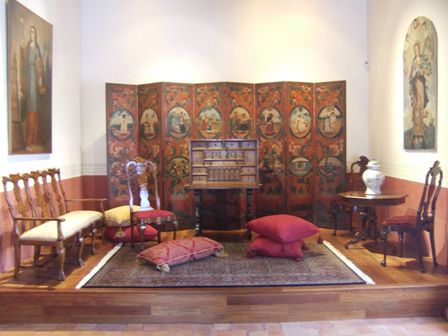 |
The rooms were laid out as they would have been. The family mostly lived on
the first floor where this was a sitting room. |
| But it is back to the churches with the Nun's Temple
(Immaculate Conception). Built in 1752 by Sister Maria Josefa Lina de la
Canal who invested the wealth inherited from her parents to found the
convent. | 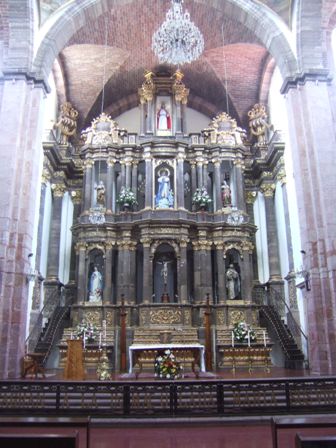 |
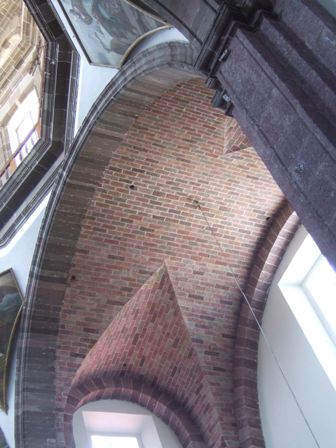 |
The vaulted brickwork is quite impressive although I suspect this may have
been renovated at some time. |
| As you wander along the streets you occasionally peer
into a courtyard. Note the mural at the end of this corridor. | 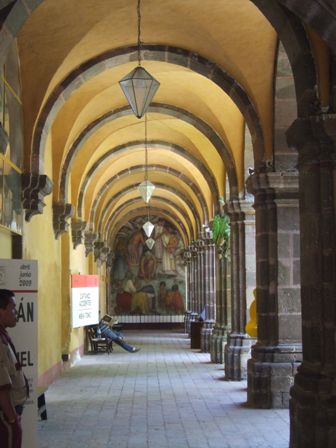 |
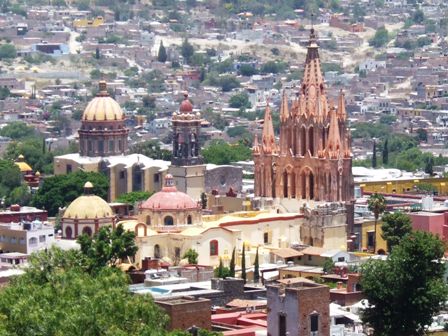 |
We climbed up the city streets (which are very steep) to a 'mirador' where
we could look out over the town centre. The view as we came in is from
several hundred feet above us. This shows just how closely some of these
churches are packed together. The intricate pink tower is on the Parroquia
de San Miguel Arcángel. The church was
built in the late 17th century but the fancy towers were added in the late
19th by Zeferino Gutierrez who reputedly based the design on a postcard of a
Belgian church and instructed the builders by drawing plans in the sand with
a stick. |
| Opposite the mirador is an artisans' market. With no
tourists, this was basically closed. But each small space has its own
electricity meter. | 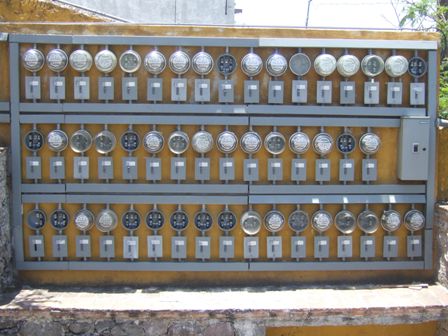 |
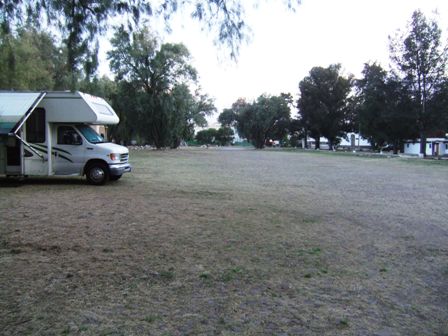 |
So back to the campsite. We had not planned to come to this town but we were
desperate to find a site with a laundry. This one didn't but they had a
service where the maids would do it all for you. So we got all our clothes
and bedding washed and dried and it didn't require any effort on our part.
Jan thought it was expensive but I thought it was worth it for her. |
| Occasionally we get a sunset that we manage to catch.
We tend to sit in the RV, with all the blinds closed to keep the sun out,
because it is too hot to sit outside and the flies get to be a pain at dusk. | 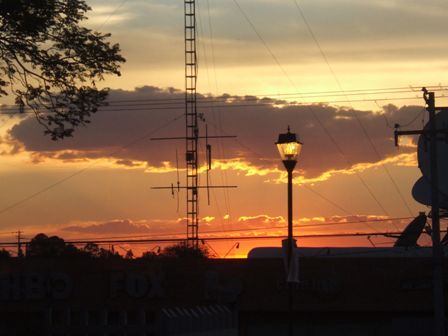 |
|